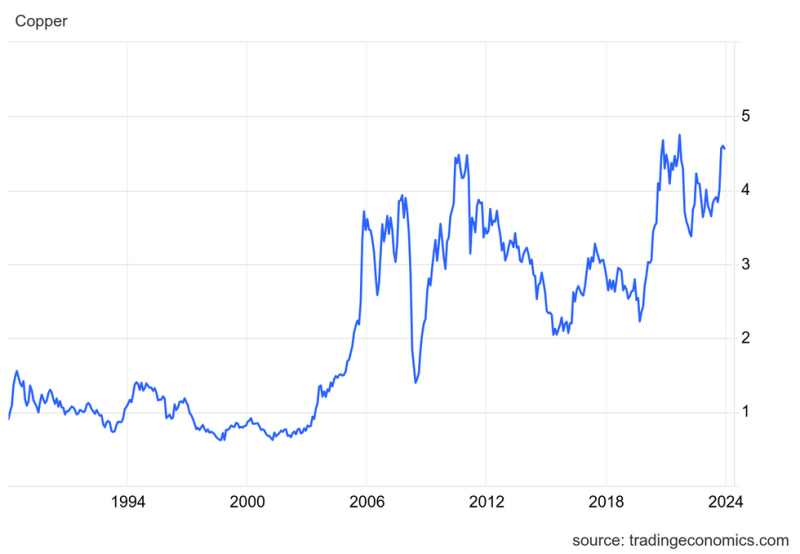In the world of investments, copper has always been a valuable asset due to its utility across various industries. Understanding the historical trends of copper prices can provide valuable insights for investors looking to make informed decisions. By analyzing historical data up to 2024, we can gain a better understanding of the factors influencing copper prices over time.
During the early 2000s, copper prices experienced a significant spike, driven by increasing demand from rapidly developing economies such as China. The robust growth in infrastructure projects and industrial expansion led to a surge in copper prices, reaching historic highs. The period between 2006 and 2008 marked a peak in copper prices, with the metal trading at record levels.
However, the global financial crisis of 2008 had a profound impact on copper prices, causing a sharp decline in response to weakening demand and economic uncertainty. The subsequent years saw a period of fluctuation, with prices responding to shifts in global economic conditions and geopolitical events.
In the early 2010s, copper prices began to recover as the global economy stabilized and demand for the metal increased. Factors such as infrastructure development, renewable energy projects, and technological advancements contributed to the upward trend in copper prices. By 2017, copper prices had rebounded to levels not seen since before the financial crisis.
The years leading up to 2020 were characterized by a mix of bullish and bearish trends in copper prices. Various factors, including trade tensions, supply disruptions, and economic growth forecasts, influenced the volatility in copper markets. The onset of the COVID-19 pandemic in 2020 triggered a sharp decline in copper prices, reflecting the widespread impact on global economic activity.
As the world navigated the challenges posed by the pandemic, copper prices gradually began to recover in 2021 and 2022. The increased focus on green technologies and sustainability initiatives further boosted demand for copper, given its essential role in renewable energy systems and electric vehicles. These factors contributed to a steady increase in copper prices, signaling a positive outlook for the metal.
Looking ahead to 2024, projections suggest a continued upward trajectory for copper prices, driven by the ongoing transition to a low-carbon economy and the increasing demand for copper in various industries. Factors such as infrastructure investment, urbanization trends, and advancements in technology are expected to sustain the growth in copper prices in the coming years.
In conclusion, the historical analysis of copper prices up to 2024 provides valuable insights into the dynamics shaping the copper market. Understanding the historical trends and key drivers of copper prices can help investors make informed decisions and navigate the complexities of the global commodities market. With a solid foundation of knowledge and a forward-looking perspective, investors can position themselves strategically to capitalize on the opportunities presented by the evolving landscape of copper markets.




























